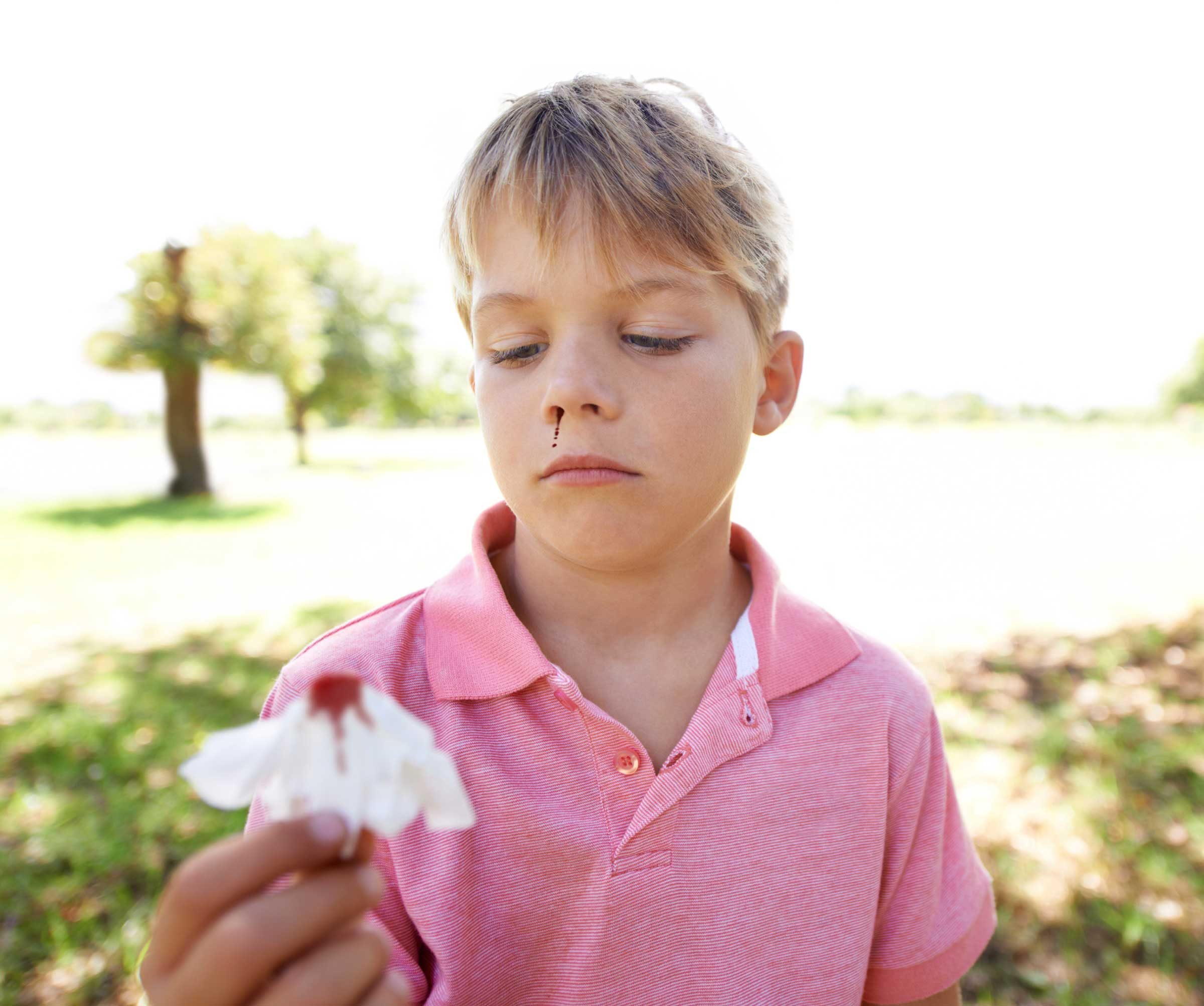Nosebleeds are fairly common, especially in children. They usually happen as a result of a minor injury, nose picking, or blowing the nose. Very occasionally, nosebleeds can be a sign of underlying illness or injury. Very rarely, a nosebleed can be life-threatening, especially in older people.
When to Seek Medical Advice for a Nosebleed
- Frequent nosebleeds (more than once a week); this can be a symptom of high blood pressure
- Persistent nosebleeds in a person who is on blood-thinning medication such as warfarin
- Thin watery blood from the nose following a blow to the head, which can indicate a possible skull fracture
- Frequent nosebleeds accompanied by bleeding gums as well as bruises that develop for no apparent reason
How to Stop a Nosebleed
1. Sit the patient down. Tell her to lean forward (not backward) so that the blood can drain. Wear nonlatex disposable gloves if you have them to protect yourself and the patient.
2. Pinch the nose. Tell the patient to breathe through her mouth and pinch the soft part of her nose to help reduce blood flow. She can lean over a sink or give her a bowl so that she can spit out any blood; swallowing it can make her sick. Advise her not to sniff, swallow, or cough, as it can disturb the clots that are forming.
3. Check the nose. After 10 minutes release the pressure and check the nose. If it is still bleeding, pinch the nose again for another 10 minutes.
4. Offer a cold compress. Give the patient an ice or cold pack to hold against the bridge of her nose to help reduce blood flow.
5. Check the nose again. Once the bleeding has stopped, let the patient clean around her nose with a damp cloth. Tell her not to blow her nose and avoid strenuous activity for up to 12 hours.

Sorry, the comment form is closed at this time.